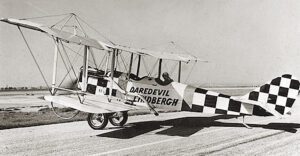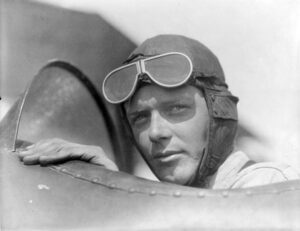Introduction:
In the annals of aviation history, few names are as synonymous with the spirit of adventure and exploration as Charles Lindbergh. Lindbergh’s iconic solo flight across the Atlantic Ocean in 1927 catapulted him to international fame and forever changed the world of aviation. But before he became a household name, Lindbergh embarked on a remarkable journey through the early days of flying. In this blog post, we’ll take a closer look at the formative years of Charles Lindbergh’s aviation career, highlighting the challenges and triumphs that paved the way for his historic transatlantic flight.
Charles Lindbergh – The Early Years:
Charles Augustus Lindbergh was born on February 4, 1902, in Detroit, Michigan. From an early age, he showed a fascination with machines and an unrelenting curiosity about the world beyond his doorstep. Lindbergh’s interest in aviation was kindled when he read about the exploits of World War I pilots, sparking a dream that would consume his life.
Lindbergh’s foray into aviation began in 1922 when he enrolled in a flight training program at Nebraska’s flying school. There, he gained invaluable experience as a barnstormer, performing daredevil aerial stunts to entertain crowds. It was during this time that he acquired his first airplane, a surplus Curtiss JN-4 “Jenny,” which he used for further flight training and to deliver airmail.
The Orteig Prize Challenge:
One of the turning points in Lindbergh’s early aviation career was the announcement of the Orteig Prize in 1919. New York hotel owner Raymond Orteig offered a $25,000 reward to the first aviator who could fly nonstop between New York City and Paris. The prize remained unclaimed for years, but it captured the imagination of aviators worldwide, including Lindbergh.
In 1927, Lindbergh’s dream came into sharp focus as he set his sights on winning the Orteig Prize. After securing financial backing from a group of St. Louis businessmen, he commissioned the construction of a custom-made airplane, the Spirit of St. Louis, which would become his vessel for the historic flight.
The Historic Flight of Charles Lindbergh:
On May 20, 1927, Charles Lindbergh, with little fanfare, took off from Roosevelt Field in New York aboard the Spirit of St. Louis. His daring solo flight was fraught with challenges, from navigating through thick fog over the Atlantic to staying awake for the 33-hour journey. Lindbergh’s unwavering determination and skill as a pilot paid off when he safely landed at Le Bourget Field in Paris on May 21, 1927. He had accomplished the impossible and won the Orteig Prize, forever etching his name into the annals of aviation history.
Legacy:
Charles Lindbergh’s remarkable journey through the early days of flying not only led to his legendary transatlantic flight but also inspired generations of aviators to reach for the skies. His dedication, pioneering spirit, and unwavering commitment to exploration left an indelible mark on aviation and opened the doors to new possibilities in air travel. Lindbergh’s legacy continues to inspire those who dream of pushing the boundaries of what is possible, reminding us that with courage and determination, the sky is never the limit.
Conclusion:
Charles Lindbergh’s early days of flying were a testament to the human spirit of adventure and the relentless pursuit of dreams. From humble beginnings as a barnstormer to his historic transatlantic flight, Lindbergh’s journey serves as a source of inspiration for all who dare to chase their ambitions, no matter how audacious they may seem. His legacy lives on in the hearts of aviators and adventurers, reminding us that the sky is just the beginning of what we can achieve when we set our sights high. That’s it for now, until next time Be Social, Fly Private!



